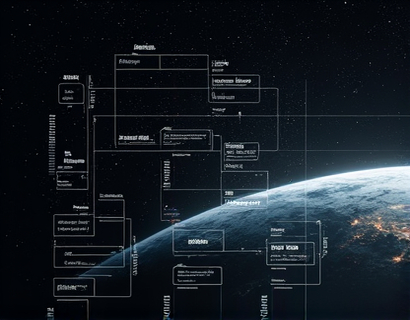AI-Powered Virtual Entity Care Solutions: Revolutionizing Digital Entity Management
The advent of artificial intelligence (AI) has brought about a paradigm shift in various sectors, and digital entity management is no exception. The creation and maintenance of virtual creatures, digital avatars, and other entities in virtual environments have become increasingly complex. Traditional methods of managing these digital beings often fall short, leading to suboptimal performance and well-being. This article explores the transformative impact of AI on digital entity care, introducing a cutting-edge solution that leverages advanced algorithms to optimize the management and care of virtual entities.
The Need for Advanced Digital Entity Care
As virtual environments continue to grow in sophistication, the need for robust and intelligent care systems becomes paramount. Digital entities, ranging from simple NPCs (non-player characters) in games to complex AI companions in virtual assistants, require continuous monitoring and management to ensure they function seamlessly. Traditional care methods often involve manual interventions, which are time-consuming and prone to human error. Moreover, these methods struggle to adapt to the dynamic and unpredictable nature of virtual environments.
The consequences of inadequate digital entity care can be significant. Poorly managed virtual creatures may exhibit glitches, behave erratically, or fail to interact meaningfully with users. This not only diminishes the user experience but can also lead to increased development costs and reduced efficiency. Therefore, there is a pressing need for a more sophisticated and automated approach to digital entity care.
Introducing AI-Powered Care Solutions
AI-powered virtual entity care solutions represent a significant leap forward in addressing these challenges. These systems utilize machine learning algorithms, natural language processing, and predictive analytics to monitor, analyze, and manage digital entities in real-time. The core advantage of AI-driven care is its ability to adapt and learn from the environment, ensuring that virtual entities remain optimal and responsive.
One of the key components of these solutions is the use of sophisticated algorithms designed to simulate human-like decision-making. These algorithms can detect anomalies, predict potential issues, and take corrective actions autonomously. For instance, if a virtual character begins to exhibit erratic behavior, the AI system can identify the root cause and apply a predefined set of solutions to restore normal functioning.
Key Features of AI-Powered Care Systems
- Real-Time Monitoring: Continuous surveillance of digital entities to detect and address issues promptly.
- Predictive Maintenance: Anticipating potential problems before they occur, reducing downtime and improving reliability.
- Adaptive Learning: The system learns from past interactions and data, enhancing its ability to manage entities over time.
- Automated Troubleshooting: Quick and accurate resolution of issues without human intervention.
- Enhanced User Experience: Ensuring that virtual entities behave naturally and respond appropriately to user inputs.
Benefits for Developers and Caretakers
For developers and caretakers, AI-powered care solutions offer numerous advantages. First and foremost, these systems significantly reduce the workload associated with manual monitoring and management. This allows teams to focus on higher-level tasks, such as innovation and content creation, rather than being bogged down by routine care duties.
Moreover, AI-driven care systems enhance the reliability and performance of digital entities. By continuously optimizing the entities' behavior and performance, these systems ensure that virtual characters and companions provide a consistent and high-quality experience. This is particularly crucial in industries like gaming and virtual reality, where user engagement and satisfaction are paramount.
Another significant benefit is the cost efficiency. Traditional care methods often require a dedicated team of specialists, which can be expensive. AI-powered solutions, on the other hand, automate many of these tasks, reducing the need for extensive human resources. This not only lowers operational costs but also scales more efficiently with the growth of virtual environments.
Case Studies and Real-World Applications
Several industries have already begun to adopt AI-powered care solutions for digital entities. In the gaming sector, for example, a major game developer implemented an AI-driven care system for their virtual NPCs. The results were remarkable: a 30% reduction in bug reports related to NPC behavior and a 25% increase in player satisfaction scores. The system's ability to adapt to player interactions in real-time created more immersive and engaging gameplay experiences.
In the realm of virtual assistants, an AI care solution was integrated into a popular virtual companion app. The app reported a 40% decrease in user complaints about the companion's responsiveness and a 20% increase in daily active users. The AI system's predictive maintenance capabilities ensured that the virtual companion remained functional and engaging, even in complex scenarios.
Technical Overview of AI-Powered Care Systems
At the core of AI-powered care systems are advanced machine learning models. These models are trained on vast datasets of digital entity interactions, allowing them to understand the nuances of virtual behavior. The system consists of several key components:
1. Data Collection and Analysis
The system continuously collects data from various sources, including sensor inputs, user interactions, and environmental factors. This data is then processed and analyzed to identify patterns and anomalies. Advanced analytics tools, such as anomaly detection algorithms, play a crucial role in identifying issues before they escalate.
2. Predictive Modeling
Using historical data and real-time inputs, the system builds predictive models to forecast potential problems. These models consider factors such as entity usage patterns, environmental conditions, and past maintenance records. By predicting issues, the system can proactively take measures to prevent downtime and ensure smooth operation.
3. Automated Interventions
When an issue is detected, the AI system triggers automated interventions. These interventions can range from simple adjustments to more complex problem-solving routines. For example, if a virtual character's movement becomes erratic, the system might recalibrate its motion parameters or reset its behavior algorithms.
4. Continuous Learning
One of the most powerful aspects of AI-powered care is its ability to learn and improve over time. The system incorporates feedback loops, where the outcomes of interventions are fed back into the model. This continuous learning process enhances the system's accuracy and effectiveness, ensuring that it remains at the forefront of digital entity care.
Challenges and Considerations
While AI-powered care solutions offer numerous benefits, there are also challenges and considerations to keep in mind. One of the primary concerns is the initial setup and integration of these systems. Developers need to ensure that the AI system is compatible with existing infrastructure and can seamlessly integrate with current workflows.
Another consideration is the quality and quantity of data required for training the AI models. High-quality, diverse datasets are essential for the system to perform effectively. Additionally, there is a need for ongoing maintenance and updates to the models to adapt to evolving virtual environments and user expectations.
Ethical considerations also come into play, particularly regarding the autonomy and decision-making capabilities of AI systems. Ensuring that the AI acts in the best interest of the digital entities and users is crucial. Transparency in how the AI makes decisions and the ability to override automated actions when necessary are important aspects to address.
Future Trends in AI-Powered Digital Entity Care
The field of AI-powered digital entity care is rapidly evolving, with several promising trends on the horizon. One such trend is the integration of emotional intelligence into AI systems. By understanding and simulating emotions, virtual entities can become even more lifelike and engaging. This could revolutionize industries like virtual therapy and education, where emotional connection is key.
Another trend is the use of edge computing to enhance the responsiveness of AI care systems. By processing data closer to the source, edge computing reduces latency and improves real-time decision-making. This is particularly beneficial for applications requiring immediate responses, such as interactive gaming and virtual reality experiences.
Furthermore, the convergence of AI with other technologies, such as blockchain and the Internet of Things (IoT), is expected to create more robust and secure care systems. Blockchain can ensure data integrity and privacy, while IoT devices can provide richer and more diverse data inputs for the AI models.
Conclusion
AI-powered virtual entity care solutions represent a significant advancement in the management and care of digital entities. By leveraging sophisticated algorithms and machine learning, these systems offer unparalleled efficiency, reliability, and adaptability. For developers and caretakers, AI-driven care not only reduces workload and costs but also enhances the overall quality and user experience of virtual environments. As the technology continues to evolve, the potential applications and benefits will only grow, shaping the future of digital entity management.











































